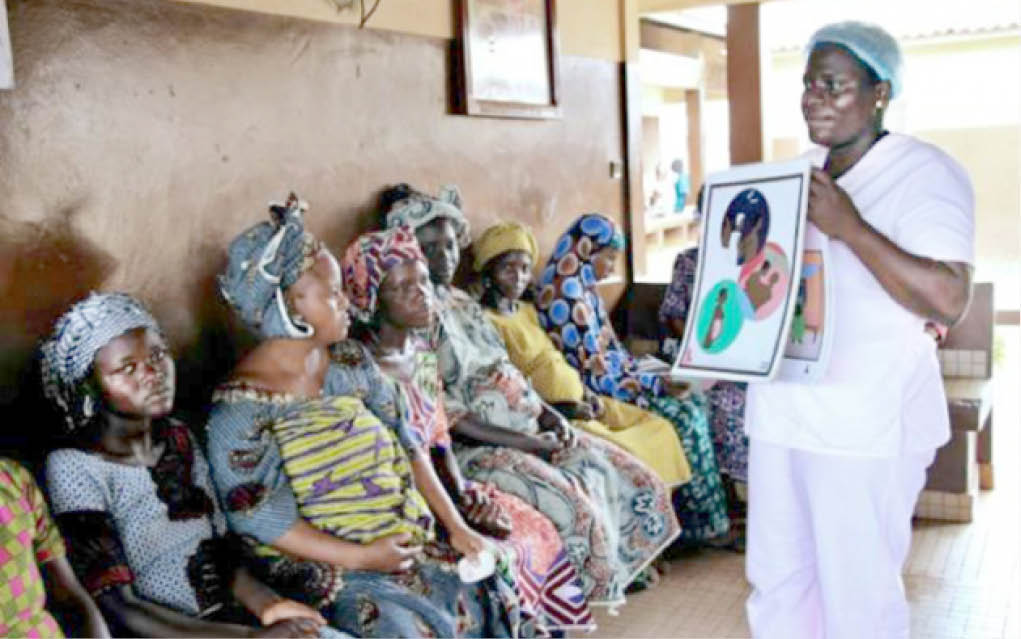What child spacing does for your health
Halima Ibrahim loves children so much, she has six already. Once she’s weaned one child, she is pregnant with another. The children don’t get the best of attention, her health is fragile. In a year, she is either breastfeeding or pregnant. She is one of many women in Nigeria who are unable to space their […]

What child spacing does for your health
Halima Ibrahim loves children so much, she has six already. Once she’s weaned one child, she is pregnant with another.
The children don’t get the best of attention, her health is fragile. In a year, she is either breastfeeding or pregnant.
She is one of many women in Nigeria who are unable to space their children. Only around 17 in 100 married women use any method of contraception, and among them only 12 in 100 use any modern method.
At least 18 in 100 women want to plan their families by spacing births but they are not able to.
Spacing is for their own good, to some extent. They get the opportunity to reduce the frequency of giving birth, maintain their health and take care of their family.
It is imperative for children to be spaced two years apart, some three to years apart, or even more than for years ago, says Dr Hadiza Galadanci, a professor of obstetrics and gynaecology at Aminu Kano Teaching Hospital of Bayero University, Kano.
Increasing birth space to at least two years significantly reduces the number of infant deaths, she says.
She adds an estimated 94,000 infant lives would have been saved in 2017 alone, if mothers spaced their children by at least two years.
She is part of a faculty facilitating a training for health journalists on reproductive, maternal and child health by the Rotary Action Group.
Galadanci explained that not spacing children has led to a mortality rate of 55 per 100,000 live birth, unwanted pregnancies and unsafe abortions which could lead to maternal death.
The world health organization (WHO) estimates that 17.6 million unsafe abortions are carried out in developing countries annually.
Galadanci said in some parts of Nigeria, unsafe abortions account for up to 10 to 40 percent of maternal deaths.
But spacing reduces pregnancy-related morbidity and mortality, improves birth outcomes, reduces prematurity as well as reduces low birth weight in babies. Child spacing has been proven to reduce infant mortality rates and has led to better healthy babies.
The ABU professor noted that when child spacing is done, it will save the lives of an additional 22,000 mothers and 101,000 children in Nigeria.
Galadanci, who is the director, Africa Centre of Excellence for Population Health and Policy enumerated the health benefits of child spacing by saying that child spacing reduces some basic things such as unwanted pregnancy, unsafe abortion and complications associated with it, as well as mortality and morbidity associated with unsafe abortion. Asides that, she said it also reduces school dropout, menstrual bleeding, iron deficiency anaemia and it helps in treating acne.
She pointed out that when women space their children, it reduces their risk of having some cancers, tumours and infections including endometrial cancer, ovarian tumours/cancer, ectopic pregnancy as well as sexually transmitted infections (STI) including HIV.
Spacing also works for mental health, with a longer time between births helping improve relationships, reduce depression and anxiety and aids children’s mental and behavioural development.
It also has social benefits. Citing herself as example, Galadanci noted she was able to attain her educational goal as she was able to concentrate on her studies despite being married.
“Spacing children will lead to a better employment, increased earning power and increased family development which will eventually lead to societal development and ultimately national development.”
Methods
Explaining how child spacing can be done, a chief midwife with NFPC project, Evelyn Kutelu lectured it is advisable to use contraceptives.
Contraceptives, she said, are devices or products used to prevent pregnancy intentionally, and it is known as child spacing, birth control or family planning. Explaining further, she said there are three methods of contraceptives; traditional, natural and modern methods.
Kutelu revealed that the options available in the traditional methods are; arm band, waist band, herbs/concoction and incisions.
In the natural methods, she pointed out that the options are; abstinence, withdrawal method, lactational amenorrhea method (LAM), calendar method, billings method and fertility-awareness method.
She mentioned that modern methods are; barrier methods (e.g. male and female condoms, diaphragm), hormonal methods (vaginal ring, pills, injectables, implants (jadelle, implanon), LNG – IUS), intrauterine device (copper – IUD), emergency contraception, sterilization method (vasectomy and tubal ligation).
“Irrespective of the contraceptive used, there are benefits to the man, woman, children, government and the society at large,” she said.
